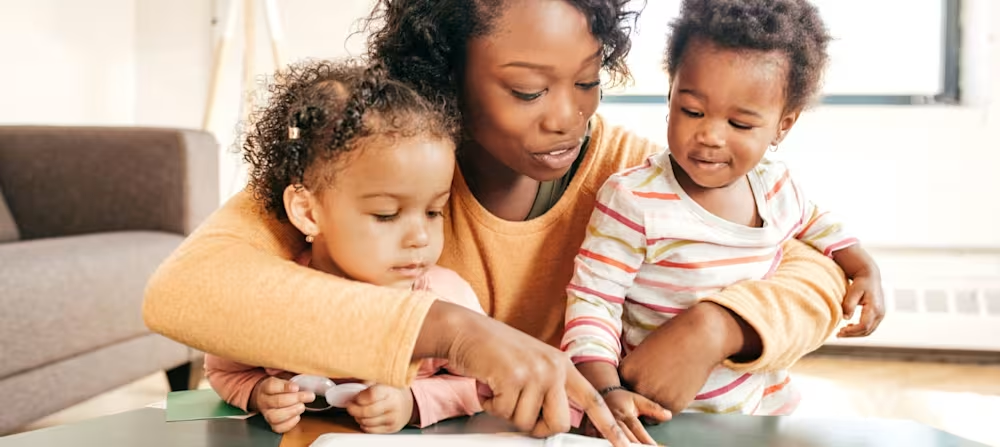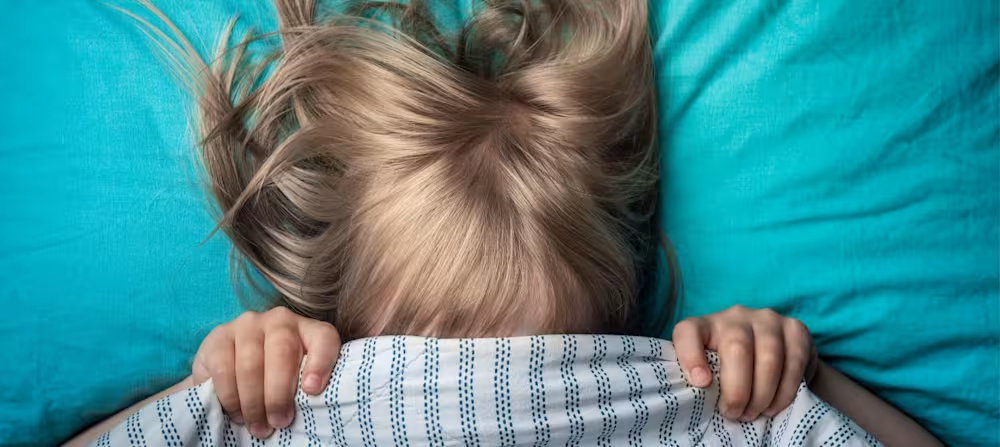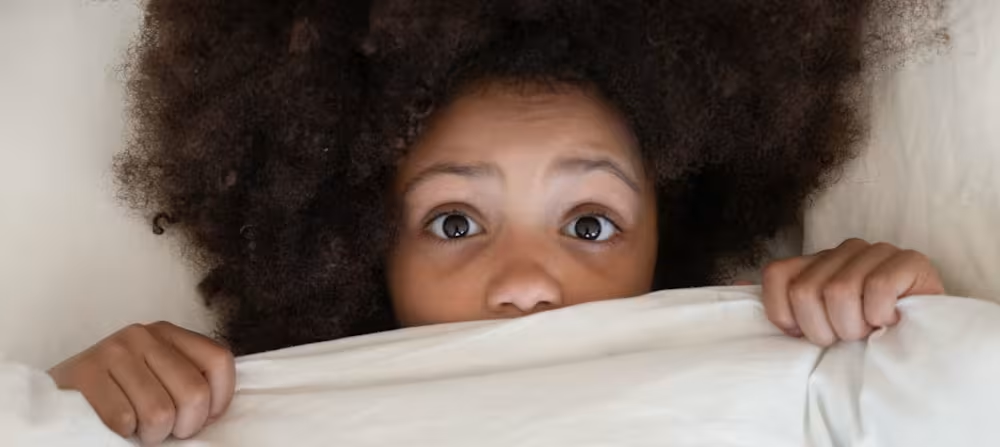5 tips to limit nighttime fears during the COVID-19 pandemic
Updated Oct 16, 2025

Does a sudden fear of the dark or increase in nightmares sound familiar? While nighttime fears are common and developmentally appropriate for young children (2 years old and up), we often see surges of fear and anxiety during periods of change. As families cope with major adjustments during the COVID-19 pandemic, “normal” life seems to be on hold for many. As a result, you may have noticed that your child now seems more fearful at night. If so, you’re not alone.
While we may not be able to get rid of these fears entirely right now, here are some things you can do to minimize them:
Stay on schedule
Monitor media
Check the room environment
Discuss fears
Empower and/or distract
Find more details below:
Tip #1: Stay on schedule
Children tend to have more nightmares when they’re overtired. With so many families home during the pandemic, and off of their normal routine, it would be understandable to see skipped naps and late bedtimes.
However, in order to limit sleep issues caused by overtiredness, we recommend: (1) prioritizing a consistent wake-up time, (2) offering regular naps, and (3) ensuring that bedtime isn’t too late.
Sleep Tip: Use the tool in the Huckleberry app to predict when your baby will next be tired, but not overtired.
Tip #2: Monitor media
Whether you’re trying to work from home, or just stay sane, chances are that your child is getting more (ok, a lot more) screen time right now. Since young children can be frightened by things that wouldn’t seem so scary to an adult, you’ll want to keep a close eye on their media choices. Even scenes like baby animals getting chased, forest fires endangering woodland creatures, or good characters turning evil can all be very overwhelming for little kids.
You’ll also want to consider what images and messages your child is being exposed to if the news is on in the background. While it might seem like your child isn’t paying attention, our little sponges are often taking in much more than we realize. Likewise, the way we discuss the pandemic and whether we appear calm will be noticed by our children.
Once bedtime comes (and there’s nothing else to distract them) it’s common for children to process their day, including any scary parts. This can lead to trouble falling asleep as well as bad dreams.
Tip #3: Check the room environment
Many toddlers and preschoolers find it comforting to keep a night light on if they have a fear of the dark. Consider using one that doesn’t emit blue light, as those rays can suppress melatonin production and make it harder to fall asleep. Alternatively, you might leave their bedroom door open and keep the hall light on to let some light into their room.
We also recommend checking the temperature in your little one’s bedroom. Ideally, it will be between 68 - 72F. When it’s too warm, we’re more likely to see nightmares. Keep in mind that a child who is overdressed may overheat as well. Although flannel holiday jammies may seem comforting right now, they may be too warm as we head into spring.
Tip #4: Discuss fears
If a child is verbal enough to talk about fears, it can help to find out what they are and see if they can be addressed. Sometimes it’s as simple as a scary shadow that can be fixed by moving a chair. Other times it might be a recurring theme in a nightmare. In those cases, it can help to think of an alternate, happier or sillier, ending.
Another thing to consider is that children sometimes associate “nightmares” or “bad dreams” with other things - like wanting a parent to come into the room at night. This can happen when a child wakes during the night (for any number of reasons) and a parent asks, “did you have a bad dream?” The child then learns that a "bad dream" gets the parent into the room at night. So they may learn to use the term, even if they technically didn’t have a nightmare.
Tip #5: Empower and/or distract
Despite our best efforts, kids will still have occasional bad dreams and anxieties. In these cases, our goal will be to help them feel safe while maintaining our routines as best we can. Many kids will feel more secure with a special stuffed animal or doll to hug at bedtime. Older preschoolers (4 or 5 year olds) may also like to sleep with a flashlight that they can choose to turn on when needed.
If your child is having a hard time focusing on anything other than their fear, you might try letting them listen to soft music or a children’s at bedtime. Keep in mind however that if they fall asleep listening to an audio book, they might want to listen to it in order to fall back to sleep when they wake during the night. In these cases, it might be a better option to use an old-fashioned cd player and audio book cd (that they can turn on themselves) rather than an app.
For further information on how emergencies impact kids, you can check out the CDC’s guide to .
Share article:
Note: The content on this site is for informational purposes only and should not replace medical advice from your doctor, pediatrician, or medical professional. If you have questions or concerns, you should contact a medical professional.
Share article:







